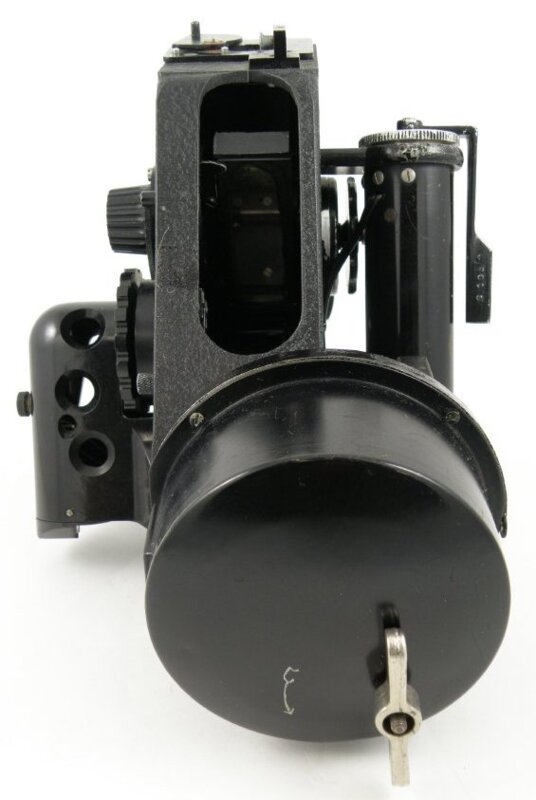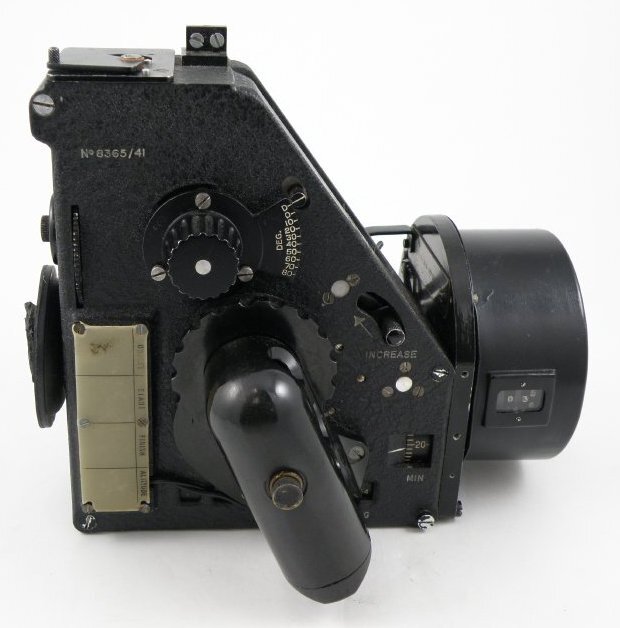Bubble sextant
Item
Title
Bubble sextant
Description
AIR MINISTRY AIRCRAFT BUBBLE SEXTANT MARK IX A, REF. NO. 6B/218 WITH ROSEWOOD LACQUERED STOWAGE CASE. Black cast aluminum crinkled finish, Serial No. 8365/41(Ref. No. 6B/218) second model with an open slot present at the front where a black drum houses the two minute clockwork automatic averaging attachment. An identification plate attached to the back of the clockwork is stamped with the Serial No.5187/42. There are no batteries in the left handle located on the left side of the sextant. Two metal mounting brackets riveted to the lower back of the case along with a tanned leather carrying strap attached to metal brackets which are riveted to the sides. The paper identification card is no longer present in the framed metal card holder riveted to the front of the wooden stowage case. Inside the case are two metal bracket clips which are there to secure a black plug adapter (not present). Attached to four similar clips on the opposite side of the case are two blackened wooden tubes, 1¼" in diameter and 3 7/8" tall. Three tags were also present in the case, a torn R.C.A.F. service tag dated November 21, 1945, a calibration tag with collector Bill Patz name and phone number stamped on it, and a small perforated tag dated October 1946 printed with a full description of the bubble sextant.
Identifier
003.083.002
Provenance
This instrument, introduced in 1938 and widely used by the Royal Air Force during World War II, is a modification of the Booth sextant designed by the British Royal Aircraft Establishment in 1918. Its most important new feature is a mechanical device that gives the navigator the average value of 60 observations taken over the course of two minutes. It was made by Hughes & Son, Ltd., of London. Aircraft Sextant Interest in aeronavigational instruments arose with the demonstration of the military potential of aviation during World War I, and built slowly in the 1920s. The introduction of commercial transoceanic flights in the mid-1930s, together with growing international unrest, led to increased attention to this technology. The military services purchased large numbers of these instruments in the early years of World War II, and again during the Cold War, as did commercial airlines in the post war period.
Abstract
Good
Date Created
1941/1942






